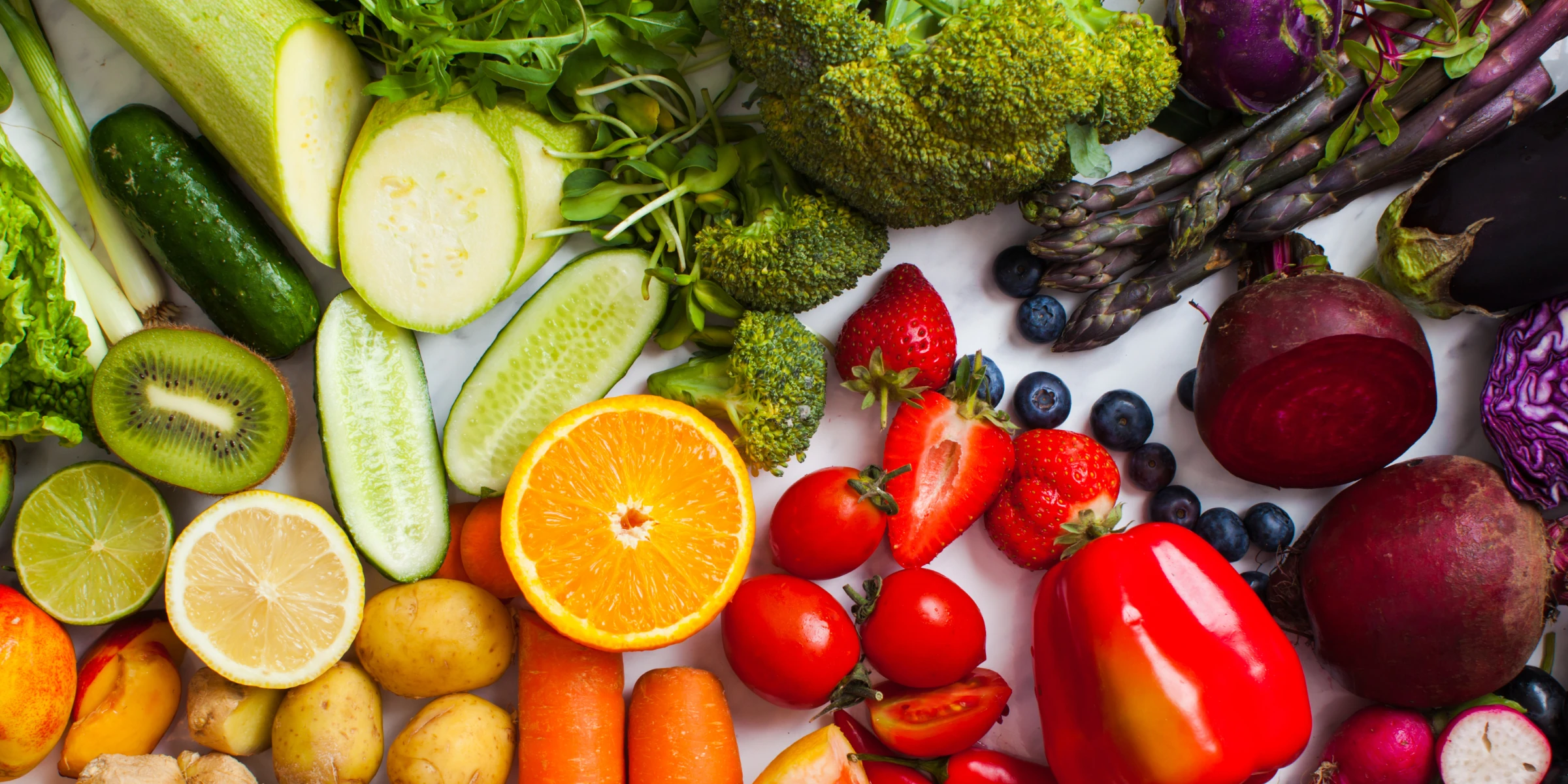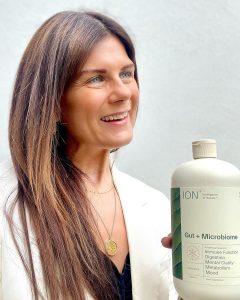


Registered Nutritional Therapist & Author
BA Hons, mBANT, AFMCP
It might sound obvious that having a colourful amount of plants in our diet would be a good thing for our health and wellbeing but why is that exactly? And how can it help to support a healthy and enriched gut microbiome?
Firstly a thriving gut microbiome depends on us feeding all the good bugs in our gut with their preferred fuel source which is fibre. Fibre is a type of carbohydrate found in all plant foods and whilst we humans don’t have the digestive capacity to break it down, fibre provides a veritable feast for our gut microbes. This allows them to proliferate and produce all of the many positive substances they give back to us which in turn supports many other areas of our body including the immune system, cognitive health, blood sugar balancing, and metabolism.
The other key factor to consider is that we need to include as many diverse sources of fibre as possible, as diversity is key to a healthy and heterogenous gut. We can achieve this largely through ingesting a wide variety of plants, and colour, in our diet. This is where the rainbow analogy starts to unfold. However, it isn’t just about the fibre compounds that exert a positive impact on our gut microbiome but also special chemical compounds found in plants called ‘phytochemicals’.
Phytochemicals have antioxidant and anti-inflammatory properties which means they help to protect the body as well as enhancing our gut microbiome. These same compounds are also often the pigments that give plants their colour – think beta-carotene in sweet potatoes, lycopene in tomatoes, anthocyanin in berries, isothiocyanates in broccoli and flavonols found in onions just to name a small few. So although ‘eat the rainbow’ might sound like a cliche it is a great way to make sure we can ingest a broad range of phytochemicals, as well as diversity of fibre, in our diet.
The goal is really to try and aim for 30+ plants per week in our diet from a colourful array of sources. This might sound like an arduous task but if you try and aim for a different colourful plant food at each and every meal you will likely be more than maxing out the 30 quota. Here are some other useful tips…
•
Blend
a variety of plants aiming
for 4 different types of vegetables and fruits into a soup or smoothie. You can
even batch cook soups and freeze and have it the next week.
•
Remember
frozen, canned and jars count
and can be really convenient which allows for easy rotation and not wasting
food which can happen if you are trying to get more variety. Think about
spinach, mixed berries and other fruits, peas, cooked vegetables, that freeze
well.
•
Try
fermented foods which you
can have to hand in the fridge and can help to nudge up the number of plants
and colour in your meal. Kimchi for example can contain up to 6 different plants
and adds a vibrant kick to many dishes! Plus these contain beneficial microbes
cultivated during the fermentation process that have an additional positive
effect on the microbiome.
•
Swap
snacks to colourful plant-based options such as a piece of fruit with a handful of nuts,
carrot sticks dipped in hummus, even a bit of dark chocolate (70% cocoa or
over) counts towards your phytochemical quota.
• Add flavour to your dishes by adding spices and dried herbs to even the most simple of meals. Including a combination of 3-4 at a time. This could be adding cinnamon, cardamom and ginger to porridge, or turmeric, chilli and cumin to scrambled eggs.
You can also use my lists below that can help you to navigate the different plant colours and indeed how to ‘eat the rainbow’ and maybe even create your chart which can be really useful to tick off the plants and its something that also works well for kids if you are struggling to get them to eat their fruit and veg!
PURPLE-BLUE – aubergine, cherries, beetroot, red cabbage, red onion, purple carrots, purple cauliflower
GREEN – broccoli, avocado, spinach, cabbage, kale, artichokes, pak choi, courgettes, sugar snap peas, green beans, watercress, rocket
ORANGE – carrot, sweet potatoes, butternut squash, pumpkin, turmeric, apricots, papaya, oranges, peaches
YELLOW – yellow pepper, onions, ginger, lemon, banana, pineapple
RED – pomegranate, strawberries, tomato, red
pepper, red chilli pepper, raspberries
REFERENCES:
McDonald, D et al (2018) ‘American Gut: an Open Platform for Citizen Science Microbiome Research’ mSystems, 3(3), e00031-18. (Online). Available at https://doi.org/10.1128/mSystems.00031-18
Leeuwendaal NK, Stanton C, O’Toole PW, Beresford TP (2022) ‘Fermented Foods, Health and the Gut Microbiome’ Nutrients. 2022 Apr 6;14(7):1527. doi: 10.3390/nu14071527. (Online). Available at https://pubmed.ncbi.nlm.nih.gov/35406140/
Makki K, Deehan EC, Walter J, Bäckhe F (2018) ‘The Impact of Dietary Fiber on Gut Microbiota in Host Health and Disease’ Cell Host Microbe. 2018 Jun 13;23(6):705-715. doi: 10.1016/j.chom.2018.05.012. (Online). Available at https://pubmed.ncbi.nlm.nih.gov/29902436/
Holscher H. (2017) ‘Dietary fiber and prebiotics and the gastrointestinal microbiota’ Gut Microbes. 2017 Mar 4;8(2):172-184. doi: 10.1080/19490976.2017.1290756. Epub 2017 Feb 6. (Online). Available at https://pubmed.ncbi.nlm.nih.gov/28165863/
Fraga CG, Croft KD, O’Kennedy D, Tomás-Barberán FA (2019) ‘The effects of polyphenols and other bioactives on human health’ Food Funct. 2019 Feb 20;10(2):514-528. doi: 10.1039/c8fo01997e. (Online). Available at https://pubmed.ncbi.nlm.nih.gov/30746536/
Sorrenti V et al (2020)
‘Cocoa Polyphenols and Gut Microbiota Interplay: Bioavailability, Prebiotic
Effect, and Impact on Human Health’ Nutrients. 2020 Jun 27;12(7):1908. doi:
10.3390/nu12071908. (Online). Available at https://pubmed.ncbi.nlm.nih.gov/32605083/
Accepting payments via


YourHealthBasket © 2025
detoxpeople Ltd
Registered in England & Wales 07156741
VAT reg GB 103 3641 60
Our new practitioner portal has been released and it’s now easier than ever to link a client’s account and provide them with suggestions using our new protocol system.
Convert your current cart into a protocol which can then be assigned to a linked client.